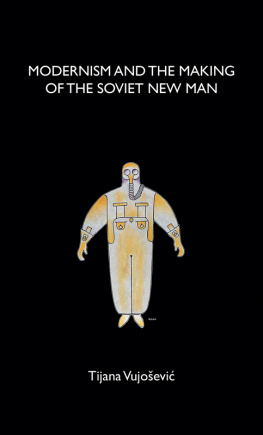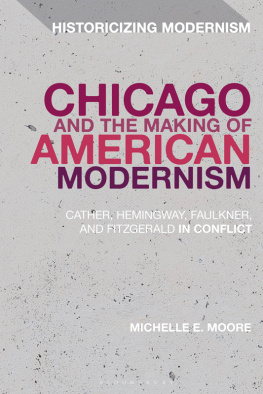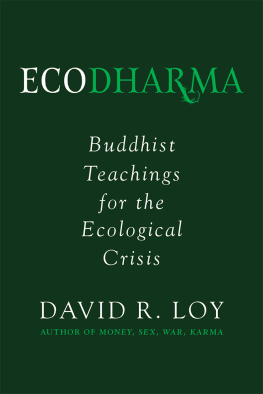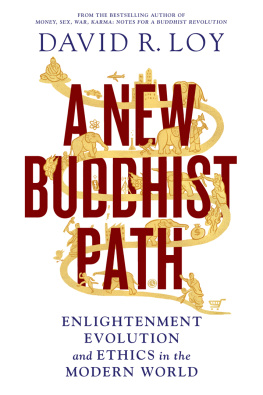McMahan David L. - The Making of Buddhist Modernism
Here you can read online McMahan David L. - The Making of Buddhist Modernism full text of the book (entire story) in english for free. Download pdf and epub, get meaning, cover and reviews about this ebook. year: 2005, publisher: Oxford University Press USA - OSO, genre: Religion. Description of the work, (preface) as well as reviews are available. Best literature library LitArk.com created for fans of good reading and offers a wide selection of genres:
Romance novel
Science fiction
Adventure
Detective
Science
History
Home and family
Prose
Art
Politics
Computer
Non-fiction
Religion
Business
Children
Humor
Choose a favorite category and find really read worthwhile books. Enjoy immersion in the world of imagination, feel the emotions of the characters or learn something new for yourself, make an fascinating discovery.

- Book:The Making of Buddhist Modernism
- Author:
- Publisher:Oxford University Press USA - OSO
- Genre:
- Year:2005
- Rating:5 / 5
- Favourites:Add to favourites
- Your mark:
- 100
- 1
- 2
- 3
- 4
- 5
The Making of Buddhist Modernism: summary, description and annotation
We offer to read an annotation, description, summary or preface (depends on what the author of the book "The Making of Buddhist Modernism" wrote himself). If you haven't found the necessary information about the book — write in the comments, we will try to find it.
The Making of Buddhist Modernism — read online for free the complete book (whole text) full work
Below is the text of the book, divided by pages. System saving the place of the last page read, allows you to conveniently read the book "The Making of Buddhist Modernism" online for free, without having to search again every time where you left off. Put a bookmark, and you can go to the page where you finished reading at any time.
Font size:
Interval:
Bookmark:
The Making of Buddhist
Modernism
DAVID L. MCMAHAN


Oxford University Press, Inc., publishes works that further
Oxford Universitys objective of excellence
in research, scholarship, and education.
Oxford New York
Auckland Cape Town Dar es Salaam Hong Kong Karachi
Kuala Lumpur Madrid Melbourne Mexico City Nairobi
New Delhi Shanghai Taipei Toronto
With offices in
Argentina Austria Brazil Chile Czech Republic France Greece
Guatemala Hungary Italy Japan Poland Portugal Singapore
South Korea Switzerland Thailand Turkey Ukraine Vietnam
Copyright 2008 by Oxford University Press, Inc.
Published by Oxford University Press, Inc.
198 Madison Avenue, New York, New York 10016
www.oup.com
Oxford is a registered trademark of Oxford University Press
All rights reserved. No part of this publication may be reproduced, stored in a retrieval system, or transmitted, in any form or by any means, electronic, mechanical, photocopying, recording, or otherwise, without the prior permission of Oxford University Press.
Library of Congress Cataloging-in-Publication Data
McMahan, David L.
The making of Buddhist modernism / David L. McMahan.
p. cm.
Includes bibliographical references and index.
ISBN 978-0-19-518327-6
1. Buddhist modernism. 2. BuddhismSocial aspects. I. Title.
BQ316.M36 2008
294.309051dc22 2008014450
9 8 7 6 5 4 3 2 1
Printed in the United States of America
on acid-free paper
This project got started with a Summer Stipend from the National Endowment for the Humanities. I am also grateful to the American Academy of Religion for a research grant and to the Andrew W. Mellon Foundation for a Central Pennsylvania Consortium grant.
An earlier version of chapter 4 was published as Modernity and the Discourse of Scientific Buddhism in Journal of the American Academy of Religion, vol. 72, no. 4 (2004), 897-933. Portions of this book also include material from Demythologization and the Core-versus-Accretions Model of Buddhism in Indian International Journal of Buddhism, vol. 10, no. 5 (2004), 63-99, and Repackaging Zen for the West in Westward Dharma: Buddhism Beyond Asia, edited by Charles S. Prebish and Martin Baumann, 218-229, Berkeley: University of California Press, 2002. Thanks to the publishers for permission to reprint this material.
Thanks also to Gerald Larson, Annette Aronowicz, Stephen Cooper, John Lardas Modern, Jason Carbine, Charles Prebish, Paul Numrich, Darryl Caterine, Dan Blair, Kabi Hartman, and Karen Sattler, all of whom read portions of the manuscript or supported the writing of this book in various ways.
Terminology
I have used Sanskrit unless referring to terms in texts in other languages. I have italicized and included diacritical marks for non-English terms unless they are generally familiar or are frequently used in this book. Proper names are rendered without diacritical marks. Sutra and sutta refer to Buddhist scriptures in Sanskrit and Pali, respectively. Tibetan terms are generally transliterated according to the system of Turrell Wylie; however, Tibetan terms that contain numerous silent characters or have entered into English parlance are rendered phonetically, with the Wylie transliteration in parentheses with the first use. Chinese terms are transliterated according to the pinyin system. Any unattributed translations from Sanskrit or Pali are my own.
The Making of Buddhist
Modernism
Introduction
Buddhism and Modernity
On a chilly Friday evening in my first year of teaching at Franklin and Marshall College, I was led at the behest of an earnest student down a dark street to the hippest nightclub in town. Inside, ghoulish sculptures protruded from flat black walls, flashing lights and ear-splitting music emanated from gyrating musicians on stage, and the darkened dance floor writhed with pink mohawks, lip and eyebrow rings, black leather, and torn jeans. And off to the side, sitting placidly in a dim corner by the bar, were five Tibetan Buddhist monks in their gold and saffron robes preparing to take the stage. When the band took a break, the monks emerged in the spotlight and, after a brief introduction by the student, performed some guttural chanting and a short pj ceremony. Some in the young audience appeared puzzled but maintained a respectful silence. Others looked satisfied, not understanding the Tibetan syllables or the mechanics of the ritual but knowing that something exotic, spiritual, profound, and very cool was happening. Afterward, a spokesperson for the local chapter of Students for a Free Tibet briefly discussed the Chinese occupation of Tibet and handed out some pamphlets, and the thrashing and gyrating resumed. The monks quickly moved on to their next stop, a show at Carnegie Hall the following evening.
It was one of the countless encounters between Buddhists and interested westernerscharacterized by overlapping interests and agendas and mutual goodwill, as well as mutual incomprehensionthat for more than a century have made up new contexts in which Buddhism can be found and which, indeed, have constituted a new Buddhism. For the monks and the clubgoers, life no doubt went on much as usual after this encounter. But the event undoubtedly generated dozens of conversations among the young partiers about the situation in Tibet, the demeanor of the monks, the otherworldly chanting, a Free Tibet concert someone had attended, and a book read or class taken on Buddhism. The monks surely had their conversations, too: attempts to ascertain the significance of the youths clothing and hairstyles, expressions of hope that even this small event would help raise awareness and support for their cause of greater autonomy for Tibet under Chinese rule, assessments of American punk music, and perhaps comparisons of the nightclub scene to an anteroom of a Buddhist hell realm. The conversations entered the stream of discourse that makes up the growing and shifting patterns of overlap between Buddhism and western culture.
Another of these conversations took place in my classroom the next Monday, when I asked my students in an introductory class on Asian religionsour first day dealing with Buddhismto relate some of their ideas and images of the tradition. After the various impressions from popular films and magazine articles, someone faithfully conveyed that semesters version of what has become a standard view: that Buddhism is a religion in which you dont really have to believe anything in particular or follow any strict rules; you simply exercise compassion and maintain a peaceful state of mind through meditation. Buddhism values creativity and intuition and is basically compatible with a modern, scientific worldview. It is democratic, encourages freedom of thought, and is more of a spirituality than a religion. While scholars steeped in the rich diversity of Buddhism in a wide variety of cultures over its twenty-five hundred years of historynot to mention serious practitioners immersed in the complexities of Buddhist practice and doctrinemay roll their eyes at such vagaries, these notions are not simply a result of ignorance. They have specific roots in representations of Buddhism in recent historyrepresentations created, in fact, by scholars and practitioners themselves. Indeed, they are accurate representations not of Buddhism in its diverse Asian historical contexts but of a new Buddhism that has emerged more recently.
Next pageFont size:
Interval:
Bookmark:
Similar books «The Making of Buddhist Modernism»
Look at similar books to The Making of Buddhist Modernism. We have selected literature similar in name and meaning in the hope of providing readers with more options to find new, interesting, not yet read works.
Discussion, reviews of the book The Making of Buddhist Modernism and just readers' own opinions. Leave your comments, write what you think about the work, its meaning or the main characters. Specify what exactly you liked and what you didn't like, and why you think so.







